Hydrangea in Winter: A Comprehensive Guide

Famed for their striking spectrum of colors and dramatic presence, hydrangeas are a staple in many gardens. These plants showcase an impressive transformation over the year, displaying varied hues in full bloom and a stark change as they enter the winter months. Though seemingly bare and delicate during the cold season, it’s important to appreciate the hidden cycle that prepares hydrangeas to put forth their vibrant blossoms when spring returns. This hidden process, combined with some proper care techniques, can ensure the successful return of your hydrangeas’ luxurious blooms.
1. Basic Understanding of Hydrangeas
Unraveling the Unique Allure of Hydrangeas: A Bloom Like No Other
Hydrangeas! Aren’t they just absolutely stunning? One can’t simply resist their splendor. Bursting with charm, these appreciable perennials hold a remarkable place in the beautiful realm of horticulture. But what are hydrangeas, and what makes them unique? This journey embarks from here, digging deep into the heart of hydrangea magic and intricacies.
Native to the southern and eastern fringes of Asia and the Americas, hydrangeas boast a rich history dating back millennia and have accumulated plenty of folklore along the way. Yet, it’s their exceptional plant biology and propagation traits that truly set them apart.
Hydrangeas are deciduous shrubs and climbing plants, renowned for their captivating large flower heads. Interestingly, what appears to be an explosion of blossoms, are delicate, individual, four-petaled flowers bundled up together in stunning clusters. Note how this contrasts the norm, as the majority of flowering plants usually boast a solitary display.
What enthralled the world, even more, is the hydrangea’s fascinating color transformation. From captivating blues to ravishing pinks, the spectacle of changing hues is mostly down to a fascinating quirk of nature – the pH level of the soil. Acidic soil tends to produce more blue flowers, while alkaline soil leans more toward pink or red. An elegant waltz between the soil’s chemical properties and the hydrangea’s bloom makes them veritable mood rings of the plant kingdom. Isn’t it amazing – a flower that can continuously tailor its presentation according to its surrounding environment?
And there’s more – hydrangeas possess an extraordinary gift for adaptability. Regardless of whether one finds themselves in a sunny sprawl or a shady nook, there’s a hydrangea variety to suit, adding that spark of vigor to any garden landscape.
Another striking feature is their longevity and robustness. Hydrangeas can still bloom brilliantly, even after enduring harsh winters. This resilience lends a quality of dependable constancy to the gardening calendar, year after year, thus making it a favorite among seasoned gardeners.
Then there is the spellbinding diversity in hydrangea types. It ranges from the globular grandeur of the “Hydrangea arborescens” to the lace cap elegance of “Hydrangea serrata“, each type adds a distinct melody to the symphony of a garden.
While hydrangeas speak volumes to botanical experts, it’s their accessible beauty that has won the hearts of hobbyists and seasoned gardeners alike. Whether it’s about their dynamic color spectrum, astounding ability to adapt, weather resilience, birth of splendid clusters or the array of varieties, hydrangeas hold a parchment of unique details that continue to fascinate.
Now that we’ve pruned and sheared, watered and fed, and most importantly, appreciated and celebrated the hydrangea, it’s quite clear how this perennial stole the garden spotlight. The seemingly ordinary hydrangea is a canvas of glorious nature, exhibiting attributes that extend far beyond its charming exteriors. After all, in the realm of horticulture, our beloved hydrangeas are unquestionably flora nonpareil.
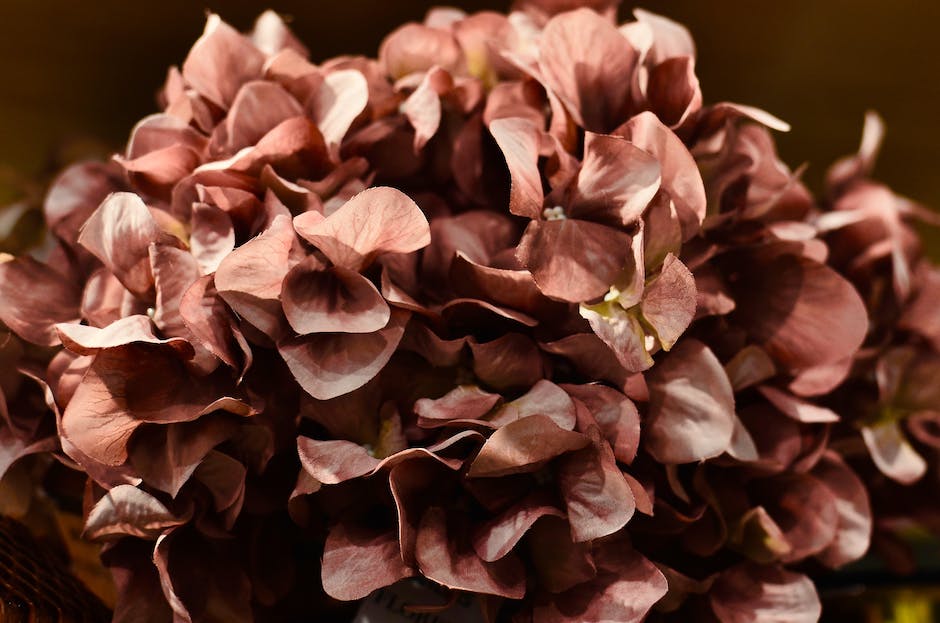
2. Hydrangea Dormancy in Winter
The Winter Watch: The Hydrangea’s Seasonal Saga
While the sturdiness of hydrangeas in the face of harsh winters is a recognized characteristic, it’s equally fascinating to delve into the specifics of what exactly occurs during these colder months. Resting and retreating, the hydrangea employs a survival strategy that aligns with the natural rhythm of seasonal changes.
As the first cold snap of winter sweeps over the landscape, the hydrangea must brace itself for the coming chill. The most profound change is the drooping of blooms and foliage. This isn’t a sign of distress but rather a part of its preparation for the inevitable freeze. The plant transitions into a state of dormancy, an biological alteration that preserves its core functions while pausing growth and development.
The hydrangea’s ability to adapt and endure is a testament to its inherent hardiness. The survival technique of dormancy is akin to some animals hibernating through winter, showcasing the intricate beauty inherent in nature’s adaptations. The varied hydrangea types, each with its specific characteristics, manage this process differently. For instance, mophead hydrangeas’ woody stems offer a protective shield against winter’s icy reign, concealing buds that will become next year’s blooms.
While already established hydrangeas can typically weather the winter with little to no interference, younger or newly planted hydrangeas might call for intervention. Extra protection in the form of mulching, burlap wrapping, or fleece jackets can prove instrumental in successful overwintering. Timing is everything: these precautions should be implemented post the first frost to aid, rather than hinder, the plant’s natural dormancy transition.
Those impassioned by hydrangea’s many wonders might feel a tinge of melancholy when winter robs these beauties of their stunning blooms. But rest assured, this seasonal slumber is more a pause than a full stop. Hydrangeas, with their enduring spirit, bid their time till spring, when they re-emerge, replenished and ready to dazzle once again. This very transformation underscores how dynamic and versatile hydrangeas truly are. Therefore, winter months can be seen less as a barren period and more as a silent symphony of survival echoing through the Hydrangea’s boughs.
To sum it accurately, a hydrangea’s journey through winter is a horticultural spectacular that could ignite the passion of any onlooker. Whether it involves protective measures for vulnerable plants, the anticipation of spring’s revival, or simply marveling at their sleeping beauty, there’s always something enchanting on the hydrangea-winter agenda. Remember, the hydrangea loves the chill as much as it does the sun; it merely shifts the way it thrives. Not only do hydrangeas enrich hobbyists’ and expert gardeners’ lives, but their resilience through these challenging months serves as an enlightening lesson in nature’s artistry. So, as the season of frost unfolds, let’s celebrate the hydrangea’s remarkable winter saga.
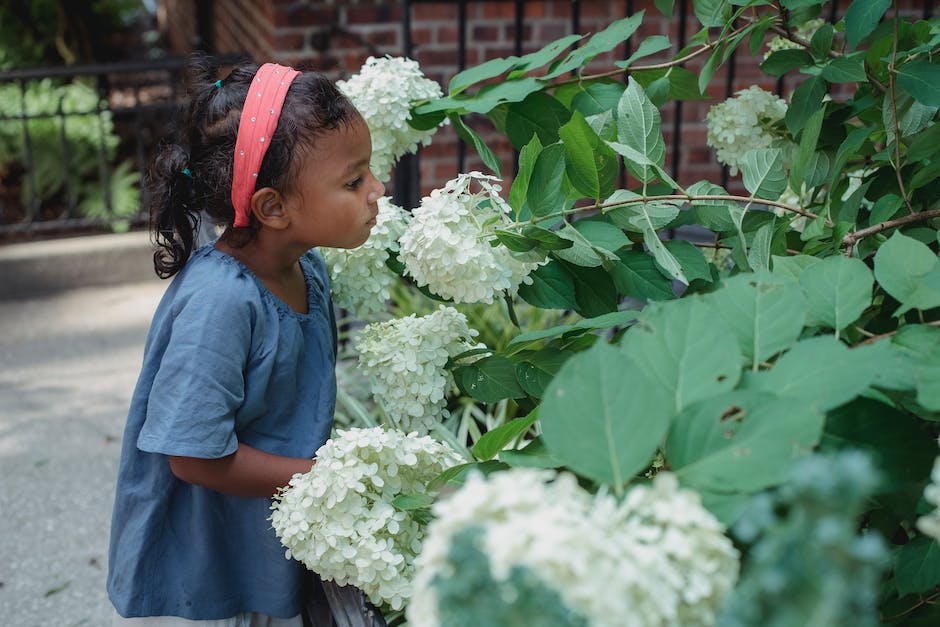
3. Physical Appearance of Hydrangeas in Winter
Seasonal Change As Aesthetic Transformation: The Winter Wonders of Hydrangeas
Every fleeting season carries unique charms that, to a knowing eye, presents a grand display of nature’s performance. When the chill creeps in and frosts begin to kiss the earth, the show starts for one such winter wonder: the hydrangea.
Once the fiery hues of fall have faded, hydrangeas shift from their vibrant summer palette, deepening into richer, subtler shades. This transition into the muted, winsome hues of winter is a sight to behold. No longer the loud, boastful shrubs of summer, they take on an understated elegance suited to the frozen tableau.
Much like their fellow flora, hydrangeas enter a period of dormancy in winter. Their leaf-covered branches fall bare, and flower heads droop low, preparing for the chilly season. Yet rather than being completely lifeless, they retain a semblance of beauty with their skeletal silhouettes poised starkly against the winter skies.
In this wintry state, certain types of hydrangeas reveal unique winter survival features. The Oakleaf hydrangea, specifically, shows off its cinnamon bark, which peels back to reveal a rich, velvety texture. Panicle hydrangeas, on the other hand, showcase their endurance with steadfast, dried blooms remaining steadfast through the chilled air.
While adult hydrangeas typically survive winter quite admirably, younger or newly planted varieties require additional care. Mulching and insulating with burlap help protect delicate roots and budding stems, and ensure their return in spring.
Come spring, hydrangeas truly display the wonder of life’s resurgence. From the bare, frost-bitten stems of winter, fresh blooms break through, a testament to the plant’s resilient spirit. For the keen observer, this is a precious sight, a victory over the frozen months just passed.
Perhaps, the beauty of hydrangeas during winter is a metaphor for their innate survival elements, a symphony of resilience silenced by the blanket of winter, only to rise once again in spring. It’s in the heart of winter where these plants reveal an unconventional charm, as if whispering, “Beauty isn’t only in spring’s blossoming bounty… but also in the stark grandeur of winter.”
The enchantment, then, lies not only in the lush, flowering stages of the hydrangea but also in the plant’s silent strength against the harsh winter. In its dormancy, resilience, and rebirth, the beauty of the hydrangea lies in its enduring twist and turns with the seasons, a testament to the vibrant circle of life in the horticultural world.
Therefore, with observant eyes and a deep appreciation, one can truly embrace the aesthetic genus of hydrangeas in wintertime. Their robust textures, stark colors, and a whisper of resilience render them as captivating winter wonders in their own right. As the cold weather rolls in, remember to look out for these silent survivors, the wintertime hydrangeas.
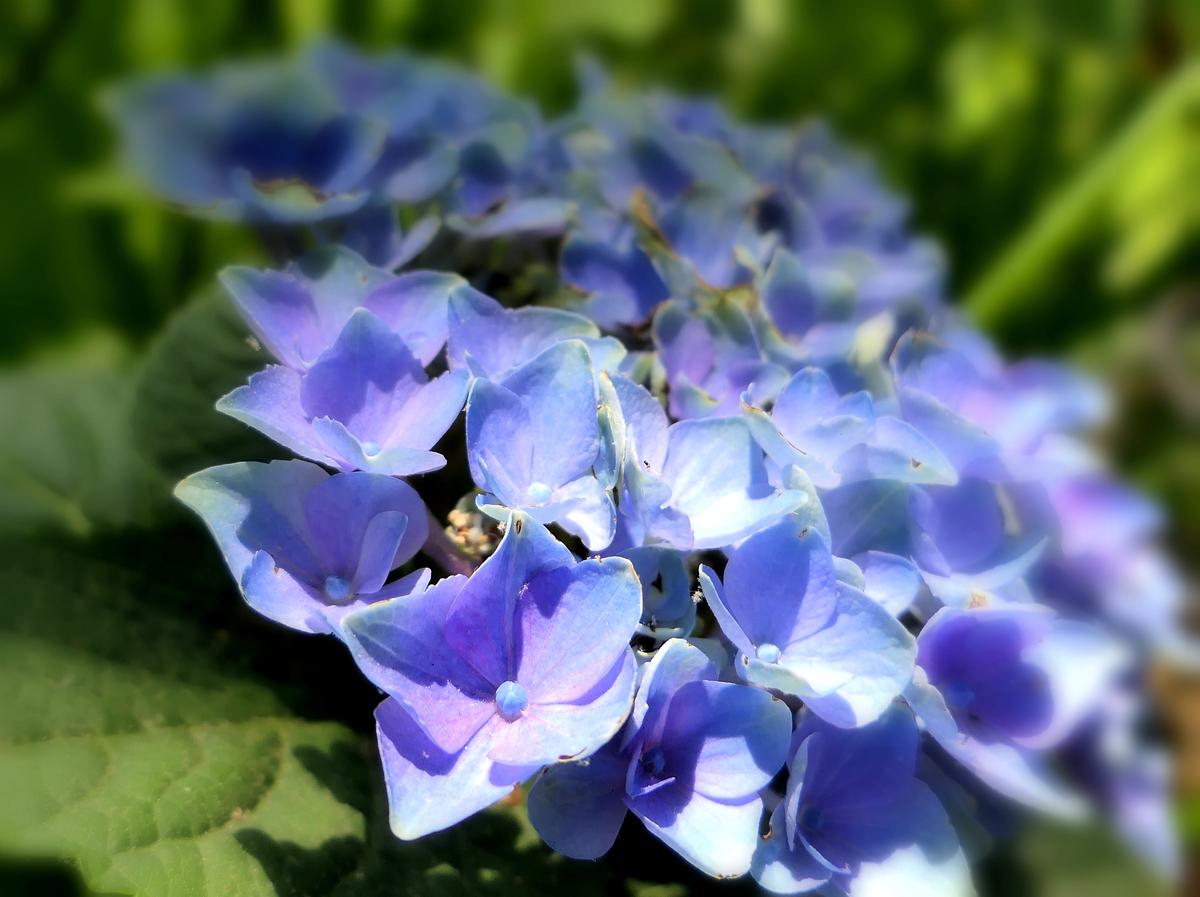
4. Winter Care for Hydrangeas
Guiding Hydrangeas to Spring: Winter Care Mastery
With the onset of colder months, nature crafts an entirely different beauty, an art of survival through frozen landscapes. And at the heart of it, we witness, as garden enthusiasts, our beloved hydrangeas, their journey through these trying times.
Oh, the beauty of the white stuff blanketing the earth is undeniable, but for our plant friends, a little preparation goes a long way with their winter-long tussle with Jack Frost. If properly cared for, these hydrangeas go mute in winter and come back to life, splendidly serenading the spring!
An inherent quality seen in hydrangeas is their deciduous nature. These flowering plants shed their leaves to withstand the freezing temperatures, a phenomenon akin to a hibernation. Their skeleton frames standing in the snow-covered garden bring a gothic allure to the scene, each silhouette telling a tale of dormancy and survival.
Contrarily, some types of hydrangeas, such as the oakleaf (Hydrangea quercifolia) and the bigleaf (Hydrangea macrophylla), flaunt their cinnamon-like bark and dried blooms through winter. Thus they become a testimony to the toughness of the plant kingdom, enduring the harsh winter realities while maintaining a certain aesthetic charm.
However, your baby hydrangeas, the young and the recently transplanted ones, need a little extra love in this season. They are just getting used to their environment and could use the help to brace themselves for the winter. Wrapping them in burlap or applying a thick layer of mulch at the base can provide added protection against the cold.
As the air warms and the days get longer, the dear hydrangeas, our gardening companions, prepare to return from their dormancy. Their resurgence in spring heralds rebirth, resilience, and life’s unending cycle, blooming in the once frozen spaces in a kaleidoscope of colors and forms.
Flowers are often appreciated for their summer vibrancy, but the curling of the hydrangea petals, the mute colors, the structural beauty of their bare branches are a silent ode to nature’s resilience and power. Unaffected by the burden of cold, these plants concentrate their energy into the roots, braving harsh conditions to bloom once spring graces the Earth.
Isn’t the stark resilience rather bewitching? Even while shouldering the burden of snow and frost, hydrangeas lend an earthy texture to the landscape. Their muted elegance adds to their highly resilient nature, symbolizing power in silence and beauty in differing phases of existence. The dry and brown petals even have a crisp charm to them, muted yet aesthetic in their winter form.
So, as the love for hydrangeas grows with each nurturing gesture, as each winter is traversed, remember to watch. Watch closely as they defy harsh conditions, painting a picture of stoic charm and whisper resilience offered by no other. Engage in it, the greatest show of endurance – hydrangeas in winter. Their journey is a lesson in persistence and renewal, as everything in nature eventually morphs into a different form, continuing the cycle of life, one season at a time.
The glory of hydrangeas in winter, from dormancy to resilience and revival, is an inspiring display of nature’s wonders, a poignant analogy to life’s trials and triumphs. They are, indeed, captivating winter wonders, a testament to nature’s survival instincts, and the quintessential canvas of change and continuity.
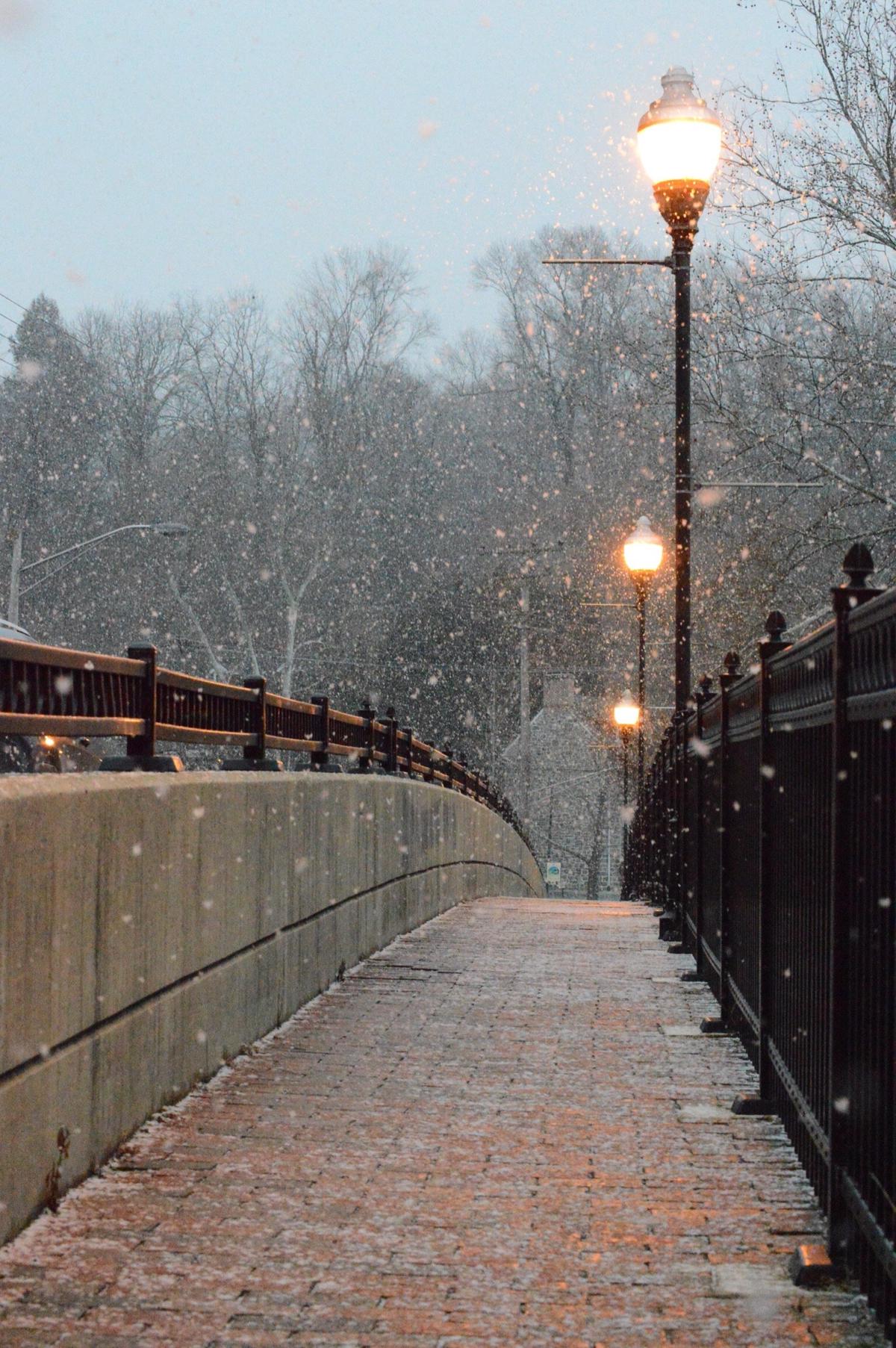
Photo by aaronwilson on Unsplash
5. Reblooming Hydrangeas After Winter
As daylight dwindles and the cold seeps in, our beloved hydrangeas shed their vibrant petals, baring their skeletal limbs to winter’s freezing grasp. This process of dormancy isn’t a sign of defeat, but rather a tactical retreat, a well-orchestrated survival strategy honed through evolution. Post-winter, encouraging these hardy plants back to their blooming glory is a mark of your dedication, understanding, and horticultural prowess.
Key to this process is understanding the intricate prerequisites of different types of hydrangeas. For example, Bigleaf hydrangeas (Hydrangea macrophylla), one of the most common species, bloom from old wood. This means that their buds for the next year’s flowers are formed in late summer onwards, thus, their blooms for the following year are wintering over in their buds. Pruning at the wrong time will leave you flowerless, as these buds are often snipped off inadvertently. Delay pruning until late winter or early spring to rejuvenate your hydrangeas for a fresh flush of growth and to ensure that the flower buds aren’t disrupted.
Commendable are hydrangeas such as the Panicle (Hydrangea paniculata) and Smooth (Hydrangea arborescens) species that bloom from new wood, meaning they form their flower buds in spring on new growth. These types give us leeway as gardeners because any winter damage or imprudent pruning won’t thwart their blooms as they can simply generate new buds in spring.
Reinvigorating hydrangeas post-winter also lies in mulching, which provides temperature regulation for root systems throughout winter’s freeze and thaw cycles. With the acts of spreading organic mulch about 2 to 3 inches thick in a radius about as wide as the plant around the base, we cater an environment conducive to their spring returns.
It’s important to also understand that winter care becomes particularly crucial for young and newly planted hydrangeas as their root systems aren’t fully established. Providing winter protection like preserving moisture in the soil and guarding against harsh winter winds can prove instrumental. Protective measures may include wrapping them in burlap or building a cold frame during their first few winters.
The endurance of hydrangeas through winter is nothing short of a testament to their resilience and a source for valuable life lessons. They remind us of the cyclical nature of life, bringing forth spring blooms as a symbolic triumph after the devastating winter months, a reaffirmation that life persists against the odds.
Their stark winter presence sans vibrant blooms offers an unconventional charm, their skeletal silhouettes standing against the snowy backdrop, a silent whisper of strength. It’s not just about the vibrant summer colors, but about appreciating the hydrangeas throughout all seasons and understanding the essential role each one plays in the cyclical beauty of these plants.
So, as our hydrangeas navigate their winter slumbers, we look on with hopeful anticipation, preparing and readying to coax them back to life come spring. Their blooming resurgence becoming a display of our silent commitment, horticultural understanding, and undying appreciation for the captivating winter wonders, our hydrangeas.
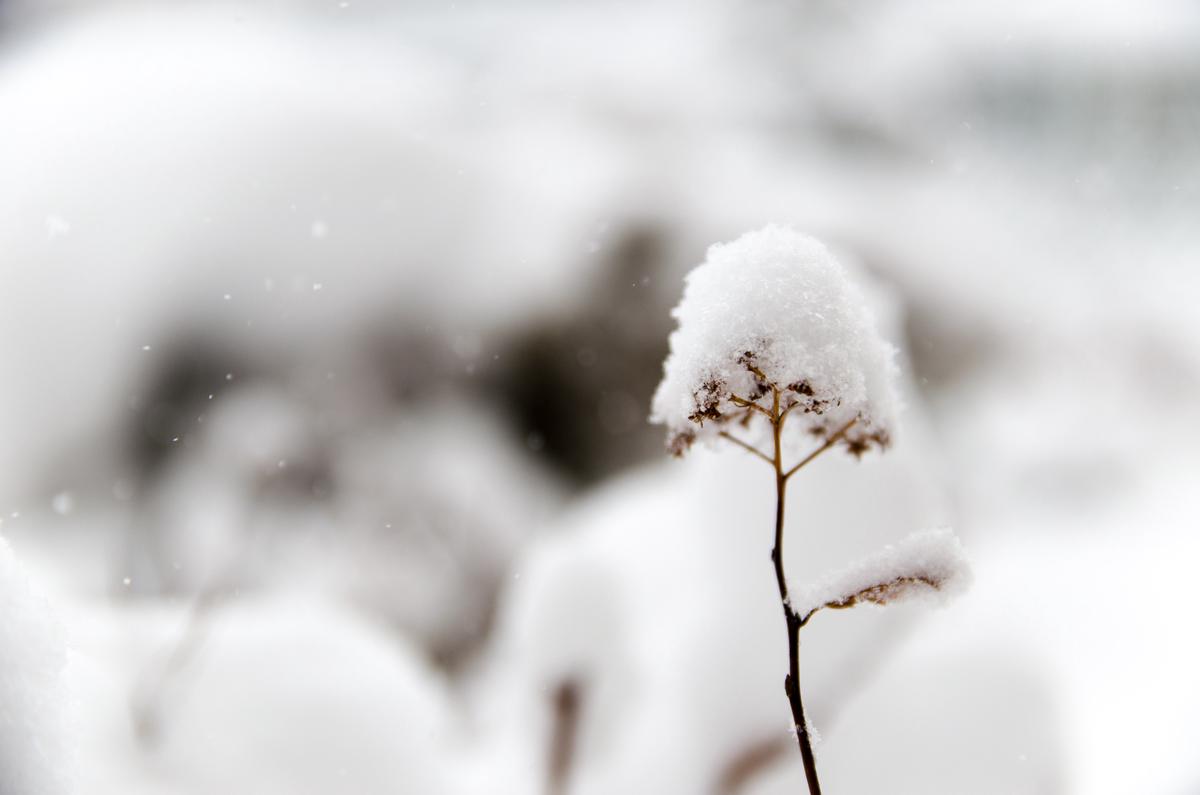
Photo by hideobara on Unsplash
Learning to navigate the winter months with proper care and understanding can immensely enhance the springtime spectacle of your hydrangeas. Even as they shed their leaves and the colors fade, these plants are simply conserving energy and preparing for a fresh, vibrant outpouring of petals in the next season. With the correct knowledge of pruning, frost protection, soil needs, and sun exposure, you can confidently care for your hydrangeas throughout the colder months and eagerly look forward to their resurgence once the winter fades.



